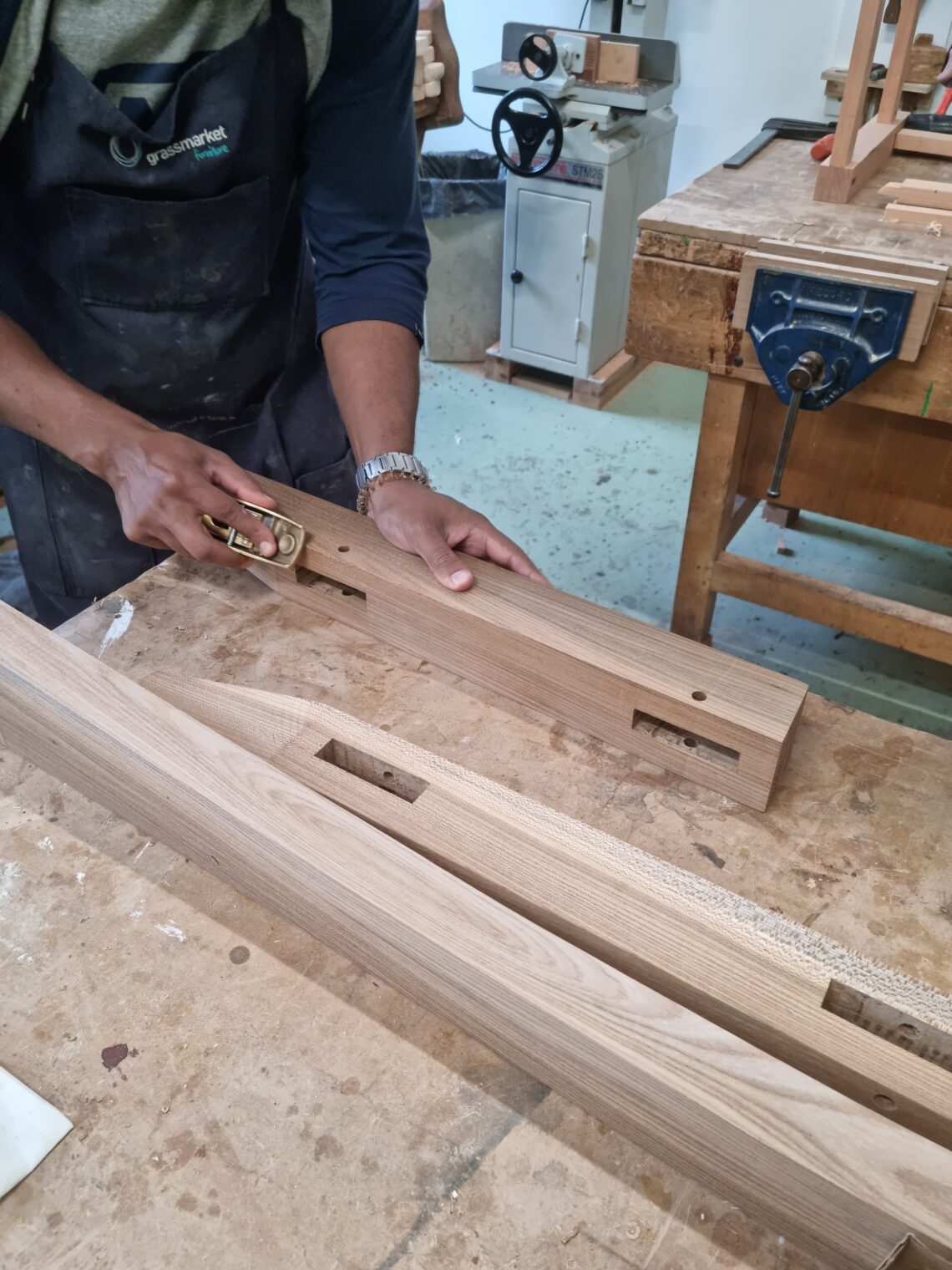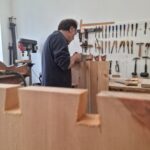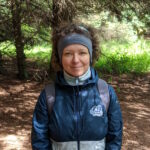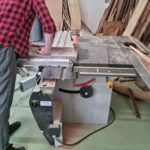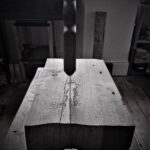Completing the dovetails and dry-fitting the carcass together was a significant milestone for us. It enabled us for the first time to get a clear view of what the finished piece would look like, and just how large and imposing it would be. It also was a necessary step before we could start work on the lattice-work that would be the home for the slates that Gus Fisher would later be carving.
We now knew the dimensions of the sticks that would form the lattice, enabling us to begin the stage of the build that included the most people. I started the process by figuring out how many horizontal and vertical pieces we would need in order to simultaneously provide the maximum number of options for fitting the slates and retain as much open space as possible through which light could pass. Not being particularly mathematically minded I drew on more traditional tools and methods to figure out what dimensions and spacing would work best, minimising as far as possible the need for numbers and calculations:
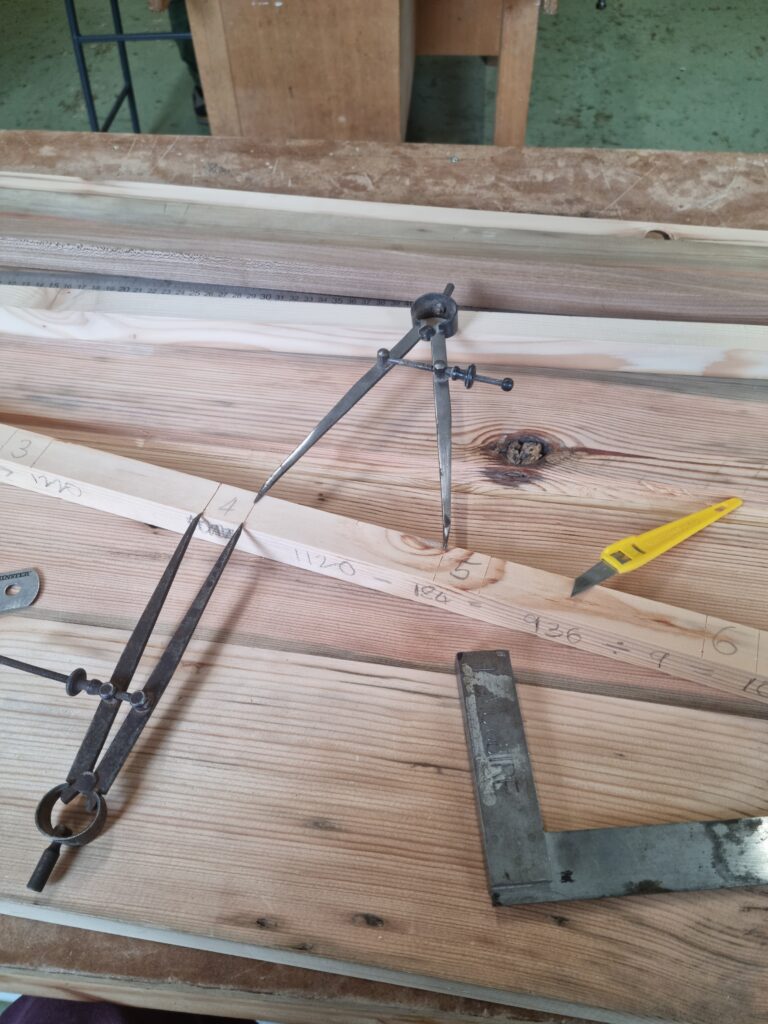
Jon was then able to cut and dimension ten sticks each of pine, for the horizontal members, and elm for the vertical. Then, using the template I had marked out, he used the table saw to make a series of initial perpendicular cuts at regular intervals in each member.
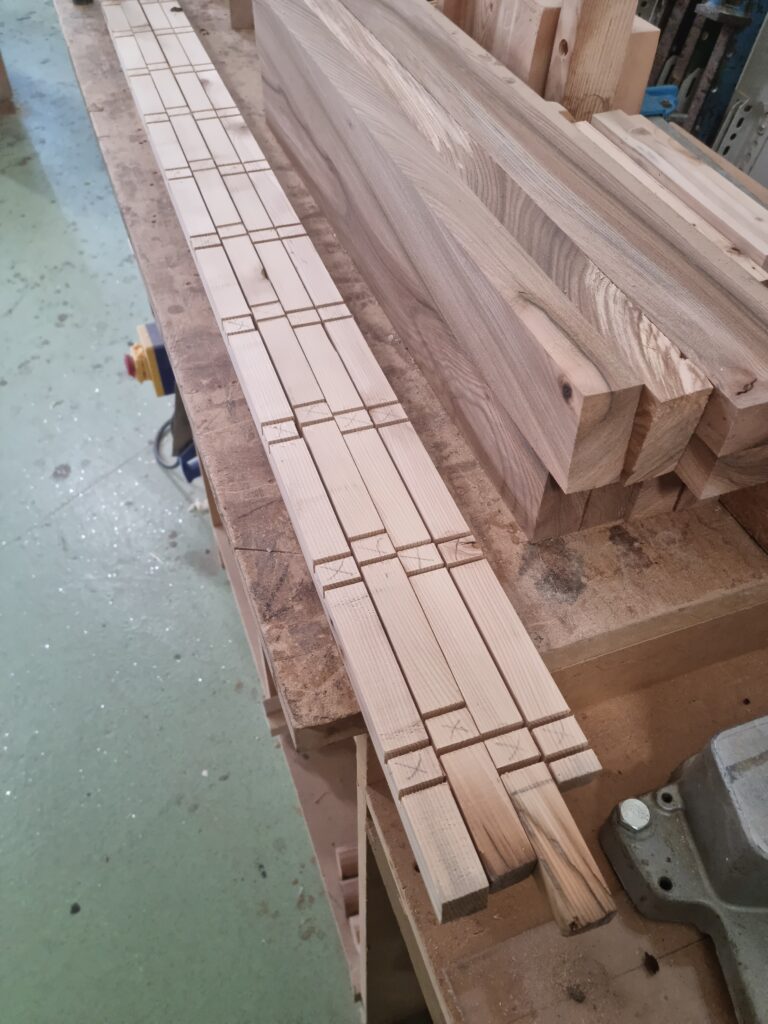
The machine was certainly a time saver in making these 400 cuts, but to remove the material between each pair, the parts marked with an ‘x’ in the image above, we worked with chisels by hand. And by this I mean many hands.
Myself, the staff from the workshop, and many of the trainees and members who were there over the couple of days that the task took all pitched in to use chisels to chop out the waste material and produce ten notches in each of the twenty sticks, notches in which the sticks would nest together to make a lattice which would be ten sticks tall by ten sticks wide.
And with this began easily the most frantic and stressful part of the whole build, the hour of bedlam at the end of a Friday afternoon in which Jon and I struggled to apply glue to 200 individual lapped joints, fit the horizontal and vertical sticks together, and apply (almost) every one of the multitude of clamps in the workshop:
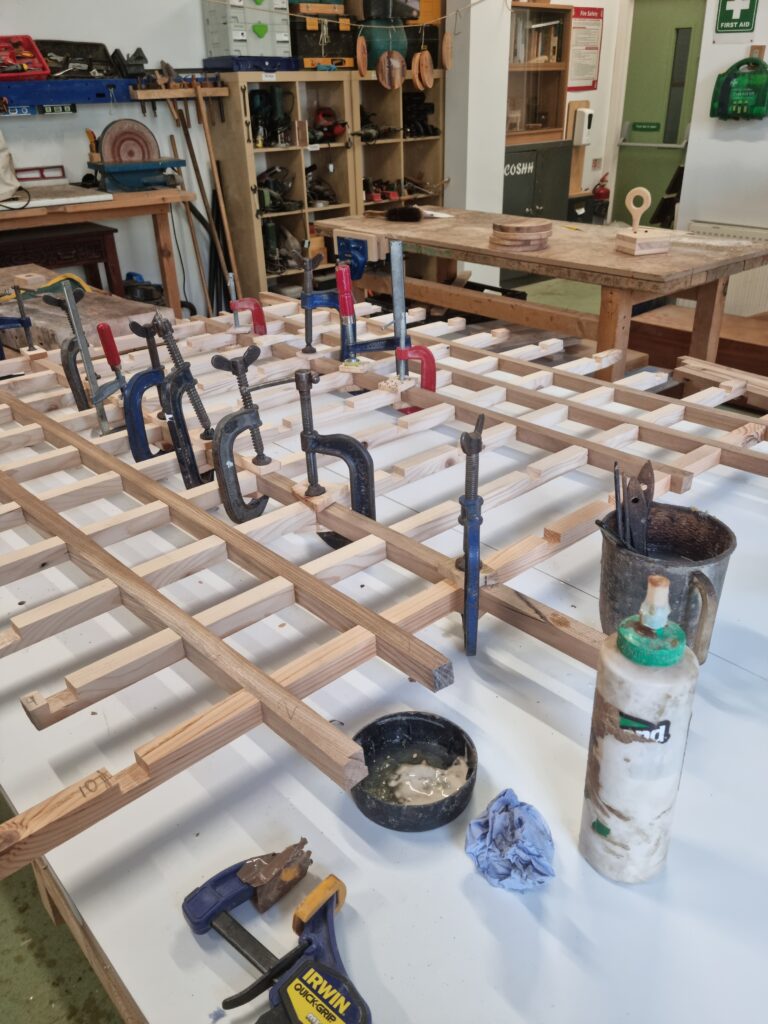
I think that it is accurate to say that the majority of the stress was within me, the person who had taken responsibility for calculating and marking the layout of the joints. Any small errors in this process would have made it impossible for the lattice to fit together and/or be square and fit inside the grooves we had cut in the carcass.
It was therefore to my tremendous relief that when we returned to the workshop after the weekend and removed the clamps from the now permanently glued lattice, it was indeed square, and did fit neatly inside the carcass, which could now also be glued (a process which was less stressful than the lattice glue-up, and which required fewer, although much longer, clamps):
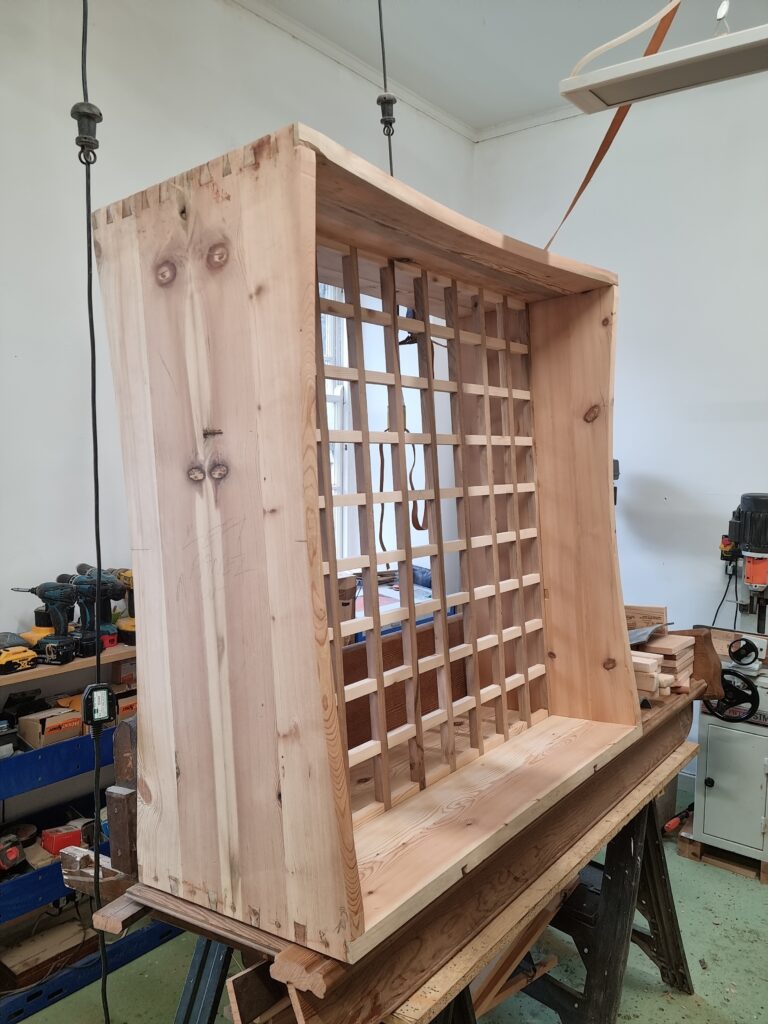
By this time it was nearing the end of August and approaching the start of the new academic year. This meant that other projects and responsibilities were beginning to stack up and that it was harder for me to spend as much time at the workshop. Not for the first time I was so grateful to be collaborating with the Grassmarket and its staff and members. The bulk of the joinery on the elm base, which for this part of the Spirit Case relied on mortice and tenon joints, was carried out by their team over a few days in which I could not be present. This meant that on my next visit I was greeted by the sight of a completed base, where previously had stood a stack of parts:
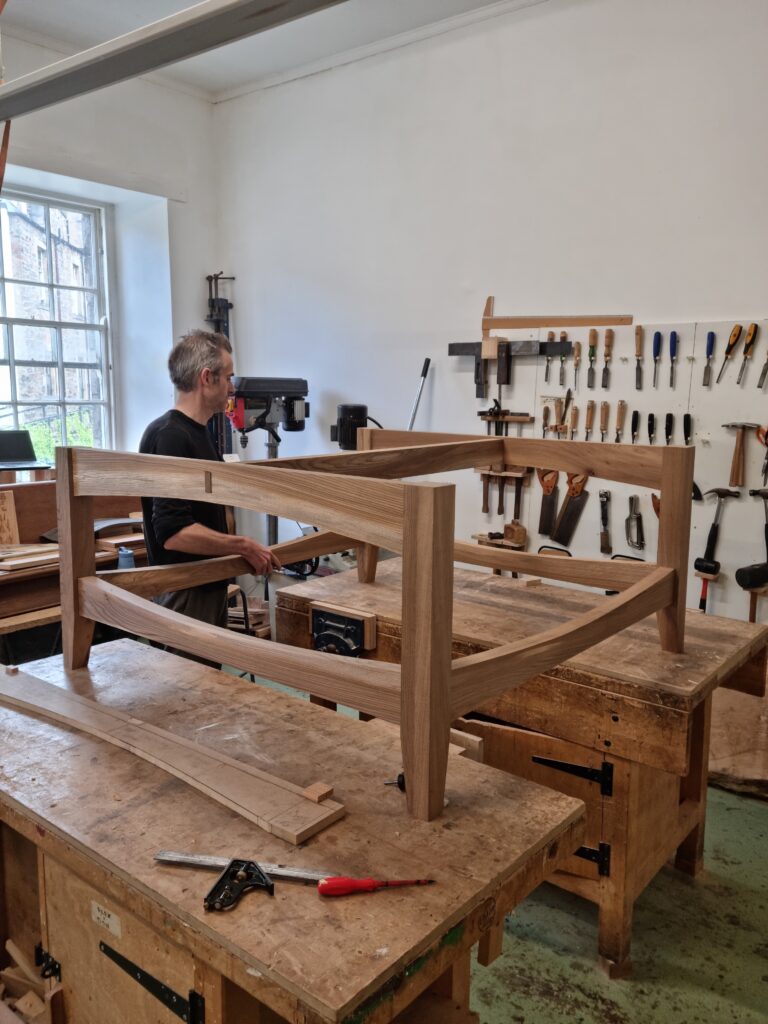
How lucky I was to have been able to spend much of the summer of 2023, the majority of my annual leave allotment, at the Grassmarket working with and alongside Jon, Campbell, Steven, Mustapha and the trainees and members who join them there every day. They collectively made a difficult period in my life joyful, a project that was too big for me to have attempted possible, and completed the majority of the sanding required (which any woodworker will tell you is the most precious gift possible!).
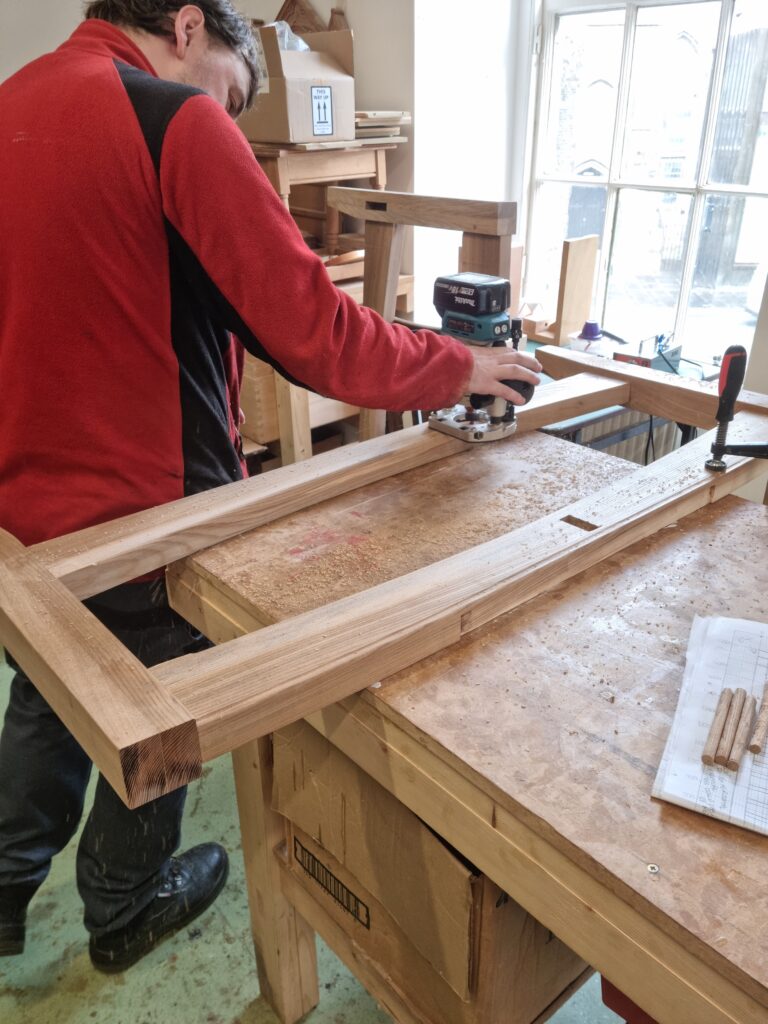
Aside from gluing the base together with Jon this also represents the end of almost all of the woodworking that I did at the Grassmarket. It wasn’t however the last of the woodworking for me. There were two further tasks, much smaller in scale, that I would busy myself with at my workbench at home over the next weeks and months, and it is to these that I will turn in my next blog entry.
